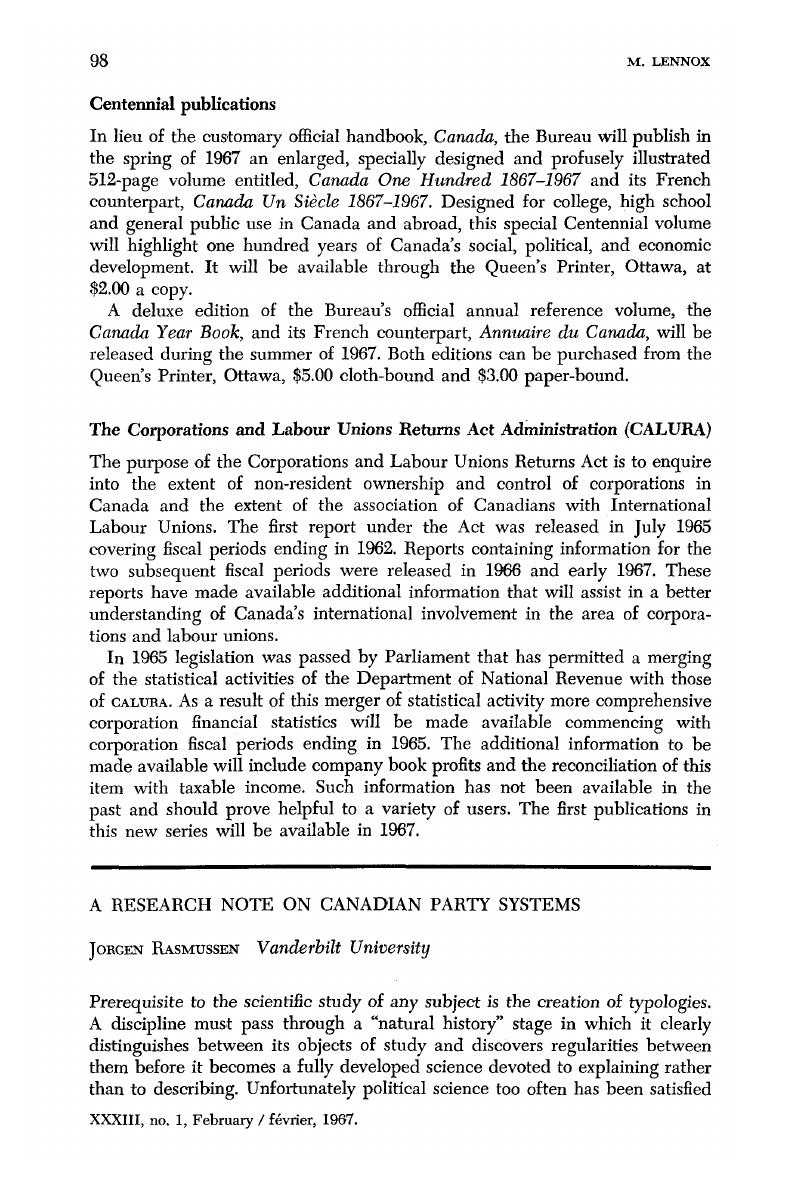Article contents
A Research Note on Canadian Party Systems
Published online by Cambridge University Press: 07 November 2014
Abstract

- Type
- Notes
- Information
- Canadian Journal of Economics and Political Science/Revue canadienne de economiques et science politique , Volume 33 , Issue 1 , February 1967 , pp. 98 - 106
- Copyright
- Copyright © Canadian Political Science Association 1967
References
1 Ranney, Austin and Kendall, Willmoore, “The American Party Systems,” American Political Science Review, XLVIII (06 1954), 477–85.CrossRefGoogle Scholar
2 “A Two-Dimensional Scheme for Classifying the States According to Degree of Inter-party Competition,” American Political Science Review, XLIX (12 1955), 1120–8.Google Scholar
3 Jones, Charles O., “Inter-party Competition in Britain—1950–1959,” Parliamentary Affairs, XVII (Winter 1963–1964), 50–6Google Scholar, relies “in general on the approach of Schlesingers two-dimensional scheme, if not his categories.” Forest Grieves has used the Schlesinger scheme to study party competition in West Germany; a report of his results is to appear in a forthcoming issue of the Western Political Quarterly.
4 Another possible measure of party dominance would be the number of seats in the provincial legislature a party won. For the reasons given in the text, this does not seem as comparable to Schlesinger's measure as does party share of the total popular vote. Using seats won rather than share of the vote would not alter the main fines of this study's argument, however, as will be pointed out in subsequent notes at relevant points.
5 Howard Scarrow discusses this problem in Canada Votes (New Orleans, 1962).Google Scholar Most of the data for this study are drawn from Scarrow's invaluable collection of election statistics. For the most recent elections I have supplemented his collection with relevant reports from Keesing's Contemporary Archives.
6 If seats won in the provincial legislature rather than share of the total popular vote is used as a measure of party dominance, only three provinces would be reclassified. Manitoba and British Columbia would be cyclically competitive instead of competitive systems and Quebec would be cyclically competitive instead of one-party cyclical. As a result, half of the provinces instead of 60 per cent would be classified as one of the non-competitive systems.
7 For a brief statement of this argument cf. McKean, Dayton, Party and Pressure Politics (Boston, 1949), 29–30.Google Scholar
8 If seats won in a province's delegation in the House of Commons rather than share of the total popular vote is used as the measure of party dominance, the results are basically the same. Alberta would be cyclically competitive instead of competitive and Prince Edward Island, New Brunswick, and Manitoba would be competitive instead of cyclically competitive.
9 The only other province to decline in competitiveness for national elections is Quebec which is one-party cyclically for provincial elections and one-party dominant for national elections. Thus 80 per cent of the provinces either remain in the same category for national elections as for provincial or advance to a more competitive category.
10 “A Two-Dimensional Scheme …,” 1127–8.
- 2
- Cited by




